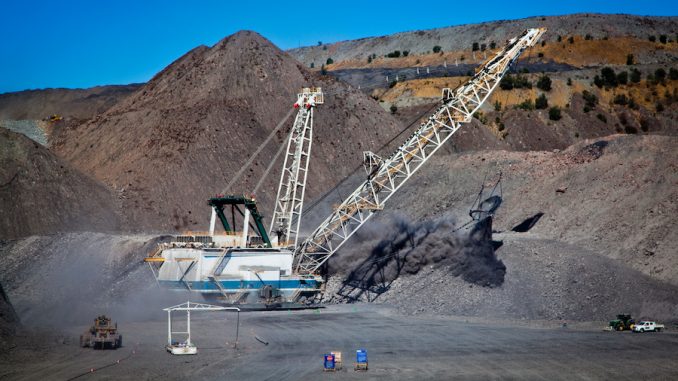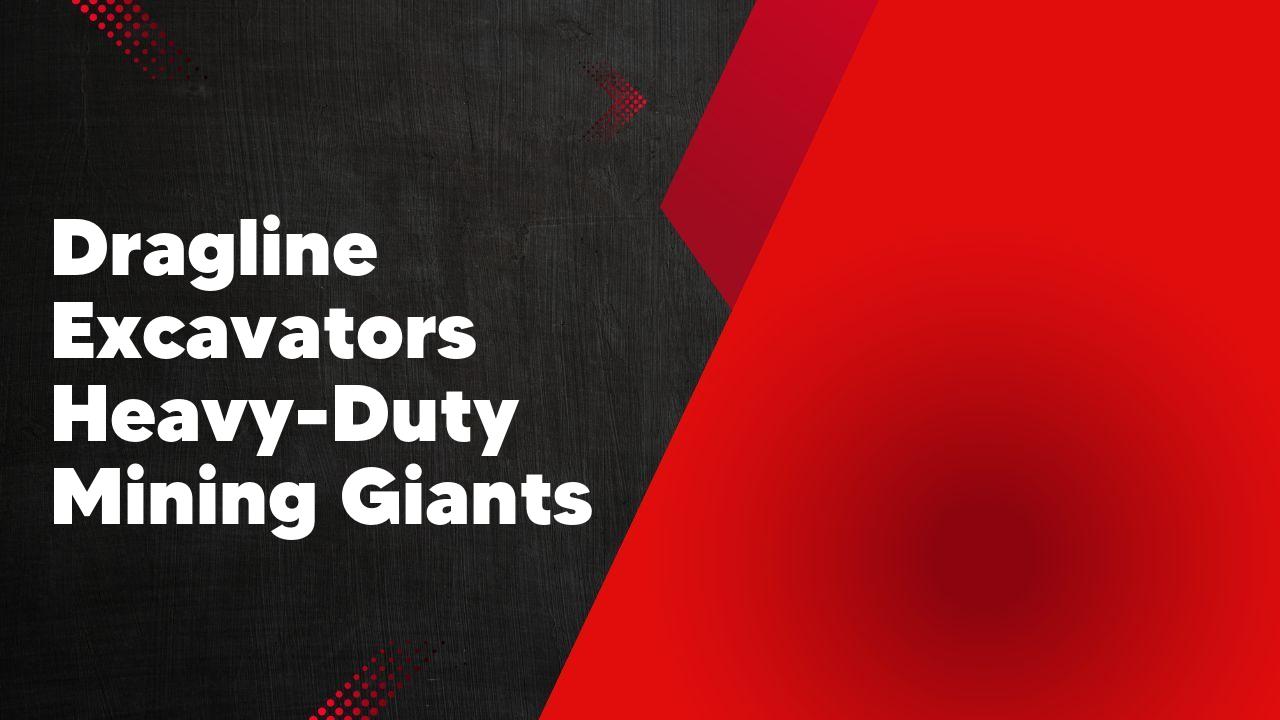Dragline excavators are massive machines used in heavy-duty mining operations. These giants of the mining industry are capable of moving large amounts of earth and rock with their powerful digging arms. In this article, we will explore the features and capabilities of dragline excavators and their importance in the mining sector.
Introduction to Dragline Excavators: The Heavy-Duty Mining Giants
Dragline excavators are massive machines used in the mining industry for heavy-duty excavation tasks. These giants are capable of moving large amounts of earth and rock, making them essential in open-pit mining operations. With their long booms and buckets, dragline excavators can reach depths of up to 200 feet and have a digging capacity of over 100 cubic yards. These machines are operated by highly skilled operators who control their movements using a combination of levers and pedals. Dragline excavators are known for their efficiency and productivity, making them a crucial asset in the mining industry.
The History and Evolution of Dragline Excavators

Dragline excavators have a rich history that dates back to the late 19th century. These massive machines were initially used in the mining industry to extract coal and other minerals from the earth. Over the years, dragline excavators have undergone significant evolution and improvements in design and functionality. The introduction of electric power in the early 20th century revolutionized the industry, making dragline excavators more efficient and powerful. Today, these machines are used in various industries, including construction, civil engineering, and even in the oil and gas sector. With their immense size and capabilities, dragline excavators continue to play a crucial role in modern-day excavation and earthmoving operations.
The Key Components and Features of Dragline Excavators
Dragline excavators are powerful machines used in the construction and mining industries. They consist of several key components and features that make them highly efficient and versatile. One of the main components is the boom, which is a long arm that extends from the machine and is used to lift and move heavy loads. The bucket is another important component, which is attached to the end of the boom and is used to scoop up materials. Dragline excavators also have a large counterweight at the rear to provide stability and balance. Additionally, they are equipped with a cab for the operator to control the machine and various safety features to ensure smooth and safe operation.
Applications and Uses of Dragline Excavators in the Mining Industry
Dragline excavators are powerful machines that are commonly used in the mining industry for various applications. These machines are equipped with a large bucket that is attached to a long boom, allowing them to dig and remove large amounts of material from the ground. Dragline excavators are particularly useful in open-pit mining operations, where they can efficiently extract coal, minerals, and other resources from the earth. They are also used for stripping overburden, which is the process of removing the top layer of soil and rock to access the underlying minerals. Additionally, dragline excavators are used for reclamation projects, where they can reshape and restore the land after mining activities have ceased. Overall, dragline excavators play a crucial role in the mining industry by increasing productivity and efficiency in various mining operations.
Advantages and Limitations of Dragline Excavators in Heavy-Duty Mining Operations
Dragline excavators are powerful machines that are commonly used in heavy-duty mining operations. One of the main advantages of dragline excavators is their ability to handle large quantities of material. These machines have a high digging capacity and can remove large amounts of overburden or ore in a single pass. This makes them highly efficient and cost-effective for mining companies.
Another advantage of dragline excavators is their versatility. They can be used for a variety of tasks, including digging, lifting, and loading. This makes them a valuable asset in mining operations where different types of work need to be done.
However, dragline excavators also have their limitations. One limitation is their size and mobility. These machines are massive and require a large area to operate. They are not suitable for small or confined spaces. Additionally, their mobility is limited, and they cannot easily move from one location to another.
Another limitation is their high initial cost and maintenance expenses. Dragline excavators are expensive to purchase and maintain. They require regular maintenance and repairs, which can be costly for mining companies.
In conclusion, dragline excavators offer several advantages in heavy-duty mining operations, including their high digging capacity and versatility. However, they also have limitations, such as their size, mobility, and high cost. Mining companies need to carefully consider these factors before deciding to use dragline excavators in their operations.
The Future of Dragline Excavators: Innovations and Trends in the Mining Sector
Dragline excavators have long been a staple in the mining industry, but as technology continues to advance, so too do these massive machines. Innovations in dragline excavators are revolutionizing the mining sector, making operations more efficient and cost-effective. One major trend in the future of dragline excavators is the integration of automation and artificial intelligence. This allows for increased precision and accuracy in digging and loading, reducing the risk of human error and improving overall productivity. Additionally, advancements in materials and design are making dragline excavators lighter and more durable, increasing their lifespan and reducing maintenance costs. With these innovations and trends, the future of dragline excavators in the mining sector looks promising.
Conclusion
In conclusion, dragline excavators are essential heavy-duty machines used in the mining industry. They are capable of moving large amounts of earth and minerals, making them highly efficient for mining operations. With their impressive size and power, dragline excavators play a crucial role in extracting valuable resources from the earth.
What are dragline excavators?
Dragline excavators are heavy-duty machines used in mining operations to remove overburden and extract minerals.
How do dragline excavators work?
Dragline excavators work by using a large bucket attached to a long boom. The bucket is lowered into the ground and then dragged towards the machine, scooping up the material in its path.
What are the advantages of using dragline excavators?
Some advantages of using dragline excavators include their ability to remove large amounts of material quickly, their efficiency in digging deep and wide holes, and their versatility in various mining applications.
What are the main components of a dragline excavator?
The main components of a dragline excavator include the boom, bucket, hoist rope, drag rope, and the machine’s power system.
What are the different types of dragline excavators?
There are two main types of dragline excavators: walking draglines and crawler draglines. Walking draglines are self-propelled and move on large tracks, while crawler draglines are mounted on a set of tracks and require external transportation.
What are dragline excavators used for?
Dragline excavators are primarily used in mining operations for tasks such as removing overburden, extracting minerals, and creating open-pit mines. They can also be used in civil engineering projects for tasks like dredging rivers and lakes.

